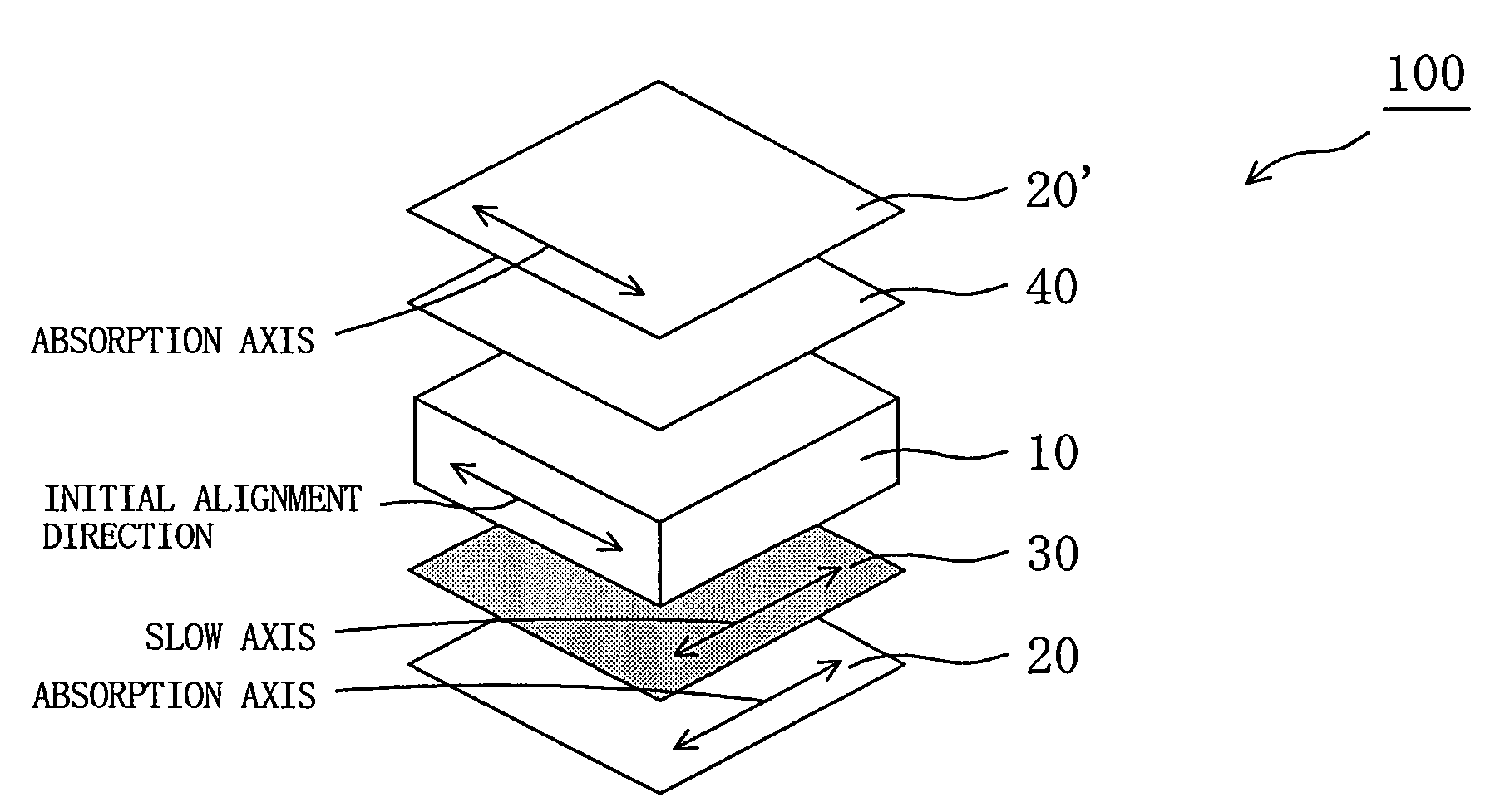Liquid crystal panel and liquid crystal display apparatus
a liquid crystal display and liquid crystal technology, applied in the field of liquid crystal panels, can solve the problems of color shift, insufficient improvement of contrast ratio in an oblique direction, and deformation of the absorption axis of the polarizer, and achieve good display evenness and improved contrast ratio
- Summary
- Abstract
- Description
- Claims
- Application Information
AI Technical Summary
Benefits of technology
Problems solved by technology
Method used
Image
Examples
preparation example 1
[0213]A biaxially stretched polypropylene film “TORAYFAN B02873” (trade name, thickness of 60 μm, available from Toray Industries, Inc.) having the properties shown in Table 1 was attached to both sides of a norbornene-based resin film “ZEONOR ZF14-100” (trade name, thickness of 100 μm, available from Zeon Corporation) through an acrylic pressure sensitive adhesive layer (thickness of 15 μm). Then, the resultant was stretched 1.38 times in an air-circulating thermostatic oven at 146° C. (temperature at a distance of 3 cm from a back surface of the film, temperature fluctuation of ±1° C.) by using a roll stretching machine while a longitudinal direction of the film was held, to thereby produce a retardation film A. Table 2 shows the properties of the obtained retardation film A. The norbornene-based film had a glass transition temperature (Tg) of 136° C., an in-plane retardation value before stretching of 5.0 nm, and a thickness retardation value before stretching of 12.0 nm.
[0214]
TA...
preparation example 2
[0216]A retardation film B was produced in the same manner as in Preparation Example 1 except that the stretching temperature was changed from 146° C. to 148° C. and the stretch ratio was changed from 1.38 times to 1.40 times. Table 2 shows the stretching conditions and the properties of the obtained retardation film B.
preparation example 3
[0217]A retardation film C was produced in the same manner as in Preparation Example 1 except that the stretching temperature was changed from 146° C. to 148° C. and the stretch ratio was changed from 1.38 times to 1.35 times. Table 2 shows the stretching conditions and the properties of the obtained retardation film C.
PUM
 Login to View More
Login to View More Abstract
Description
Claims
Application Information
 Login to View More
Login to View More - R&D
- Intellectual Property
- Life Sciences
- Materials
- Tech Scout
- Unparalleled Data Quality
- Higher Quality Content
- 60% Fewer Hallucinations
Browse by: Latest US Patents, China's latest patents, Technical Efficacy Thesaurus, Application Domain, Technology Topic, Popular Technical Reports.
© 2025 PatSnap. All rights reserved.Legal|Privacy policy|Modern Slavery Act Transparency Statement|Sitemap|About US| Contact US: help@patsnap.com



